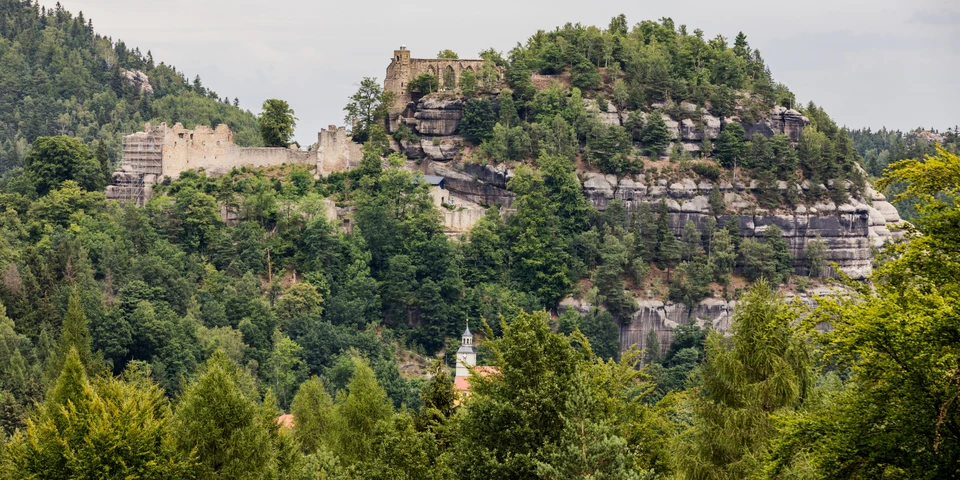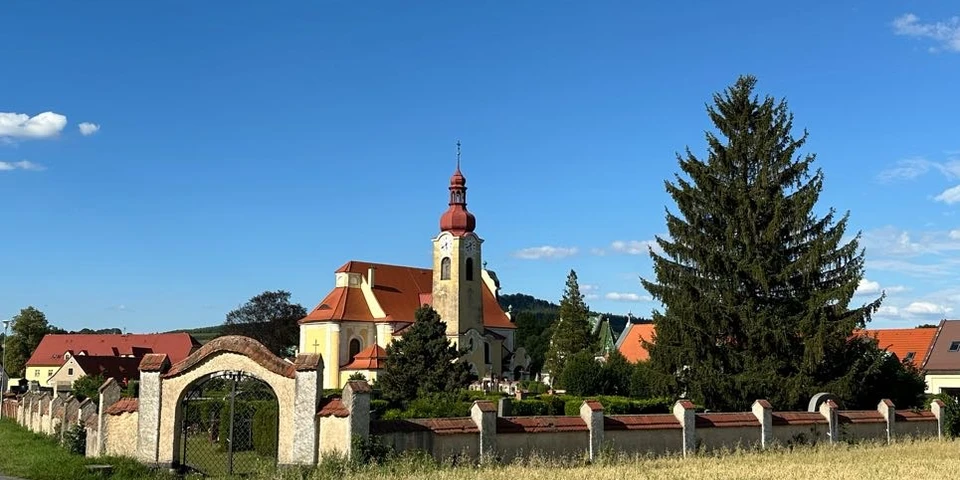Tips for a trip
The Jizera Mountains and their surroundings are home to countless hidden beauties that deserve to be shared. We will not only introduce you to the natural wonders but also to the rich cultural heritage, with a history that takes us back several centuries.
A travel guide can be:
Bohemian Paradise
It’s about a 45-60 minute drive from Libverda, but we definitely recommend extending your visit for a longer stay. Notable highlights include Turnov, famous for its Czech garnet production, as well as the charming craft alley. Be sure to check out Valdštejn Castle, Sychrov State Château, and Hrubá Skála Château. For more detailed information, you can visit the website of the Turnov Information Centre.
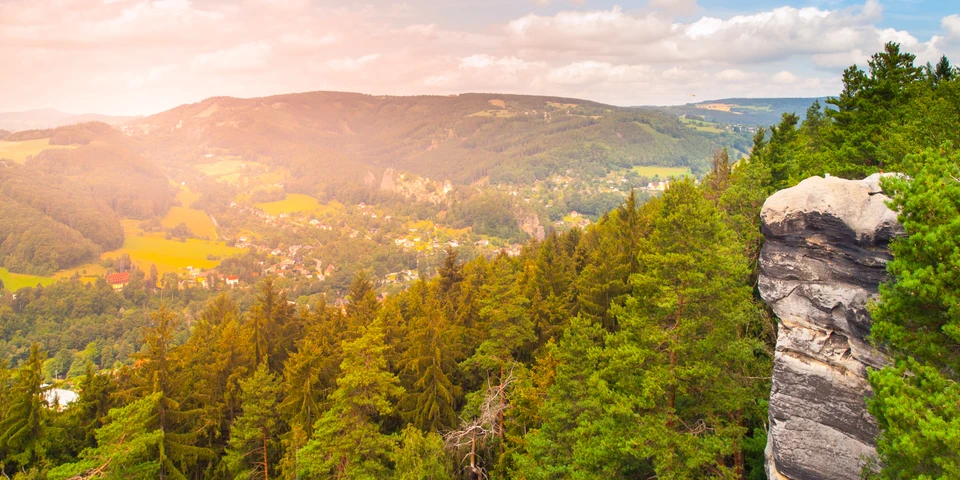
Dresden
The city of Dresden is worth a visit, especially for its monuments, such as the Baroque Pillnitz Castle, built between 1720 and 1723, and the Residenzschloss castle complex. The State Opera, museums, botanical garden and zoo are also interesting attractions. Probably the most famous sites in Dresden are the Zwinger Gallery and the Frauenkirche, which was bombed during World War II.
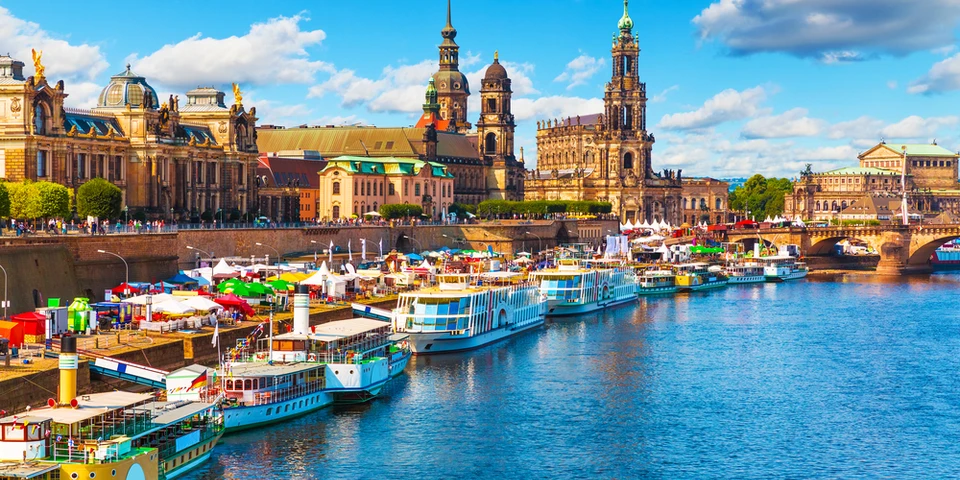
Castle Czocha
Czocha Castle is a stunning Gothic-Renaissance fortress located in southern Poland, approximately 35 km northwest of Jelenia Góra, near Lake Leśniańskie. Its distinctive appearance has made it a popular location for film directors. Constructed in the mid-13th century on the initiative of Czech King Wenceslas II, the castle served as a defensive fortress along the Czech-Polish border. Its rich history and picturesque setting make it a fascinating destination for visitors.
In 1434, Czocha Castle was occupied by the Hussites. During the Thirty Years' War, it withstood the Swedish invasions. Since 1453, Czocha Castle has been owned by the influential and wealthy Nostitz family, who ruled there for 250 years. Johann von Nostitz initiated a major reconstruction of the medieval castle into a romantic Renaissance residence in the mid-16th century.
In 1793, Czocha Castle suffered a fire, but Count Nostitz had it reconstructed in a remarkably short time.
At the beginning of the 20th century, Czocha Castle changed hands, with Ernest Gütschow from Dresden becoming the new owner. After World War II, the castle was nationalized and transformed into a holiday resort for prominent members of the Polish People's Army.
Tourists are offered a tour of the most architecturally interesting rooms of Czocha Castle, such as the two-storey Knights' Hall and the Prince's Bedroom, with its impressive canopied double bed. There are also secret underground passages, a bastion, and a tower.
Among the films that have been filmed here, we can mention "Where is Mr. General" (Gdzie jest generał), "The Secret of the Cipher Fortress" (Tajemnica twierdzy szyfrow), and the documentary program "Sensations of the 20th Century" (Sensacje XX wieku).
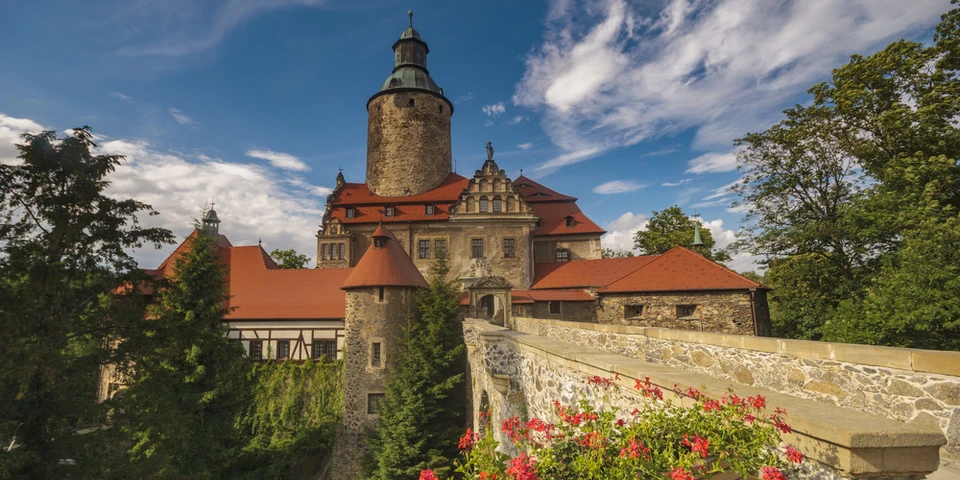
Frýdlant
This medieval town was founded at the same time as the castle of the same name. To this day, Frýdlant is the largest town on the Smědá River. It was granted town rights around 1537. Over the years, the town has changed hands multiple times, but it flourished most during the reign of Albrecht von Wallenstein. As the natural centre of the Frýdlant region, it became home to numerous valuable cultural monuments, leading to its designation as a protected conservation area.
A tip for a trip is the town hall, which was built between 1893 and 1896 according to the design of the Viennese architect Franz Neumann (known as the creator of the town hall in Liberec). The second floor of the town hall houses the town museum, which features an exhibition of the nature and history of the Frýdlant region. A notable curiosity of the museum is a large model of the original town hall, carved by carpenter Kindermann, which was formerly located in the middle of the square.
Be sure to visit the State Castle and Château. The castle is not only one of the city's most prominent landmarks but also one of the most important monuments in Bohemia, representing a combination of a medieval castle and a Renaissance château. The history of the castle dates back to the 13th century and was significantly shaped by Albrecht von Wallenstein, a prominent figure of the Thirty Years' War. The original form of the Gothic castle has only been partially preserved; only parts of the massive buildings and the large cylindrical tower remain. The Renaissance appearance of the castle was gradually acquired at the turn of the 16th and 17th centuries. The Clam-Gallas family first opened the castle premises to the public in 1801. Today, the castle houses collections of porcelain, glass, furniture, and furnishings. The rich collection of weapons, ranging from the Hussite Wars to the 19th century, is as interesting as the castle's picture gallery, which features works by Baroque masters, and the unique collection of pipes.
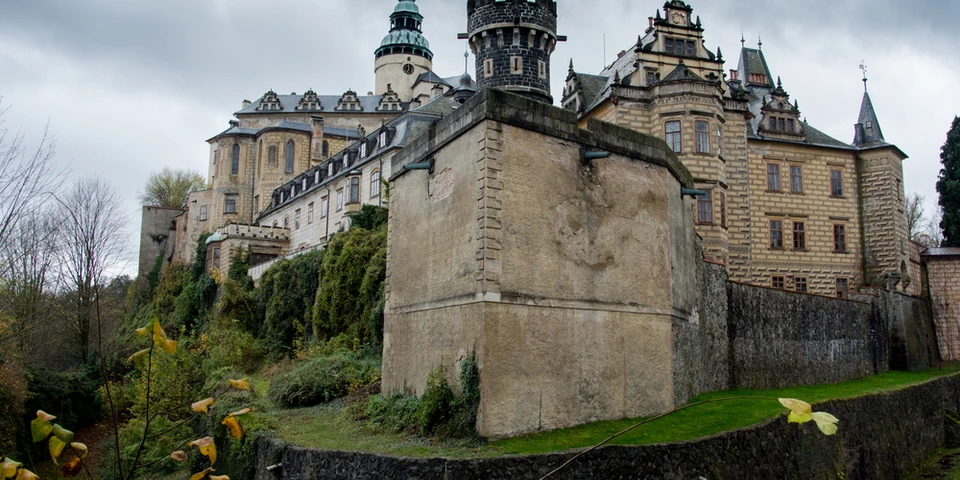
Görlitz
This frontier town, founded in 1071, still preserves its medieval fortifications, including towers and gates. In this German city, you can find up to 4,000 architectural monuments, showcasing styles from Gothic and Renaissance to the Gründer period and Art Nouveau.
Find out more about the culture of this city here.
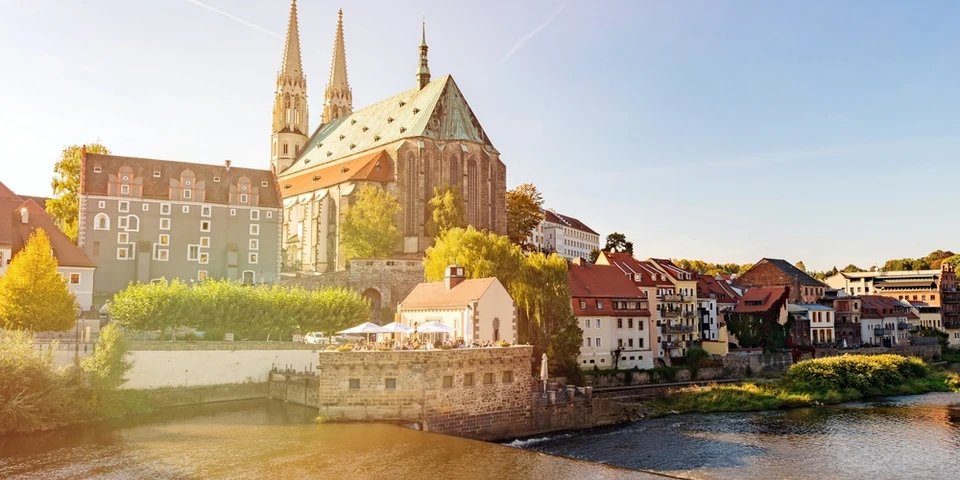
Heřmanice Observation Tower
A new wooden observation tower, nearly 24 metres high, was built above Heřmanice in the Frýdlant region in the summer of 2012. The tower offers stunning panoramic views of the surrounding landscape, including the Jizera and Lusatian Mountains, the Zittau Lowland, Dětřichov, parts of Heřmanice, and even the Turów Power Plant in Poland. Visitors can reach the top by climbing just under a hundred steps, using one of the two staircases, which means no awkward shuffling to avoid those coming down. The tubular-shaped structure, constructed from locally sourced larch and beech wood, is topped with a dome and clad in woven mesh made of wooden branches, with additional forest artefacts like mushrooms incorporated into the design. With a diameter of five metres, it is a key attraction along the long-distance cycling route that runs from Bogatynia in Poland, through Heřmanice to Dětřichov, and also branches off, for example, to the Smuggler’s Cycling Trail.
Jindřichovice pod Smrkem – a vibrant open-air museum
Step back in time and experience rural life before the Industrial Revolution, especially in the 18th and 19th centuries, at this charming museum. At its heart stands a beautiful Upper Lusatian house, built 300 years ago and now being lovingly restored. This historic building is home to the museum’s permanent residents and houses exhibits in its former byre. Discover a variety of farming tools and machinery, including a vintage horse-driven threshing machine, workshop equipment, such as carpentry and blacksmithing tools, kitchen utensils, a weaving loom, and other bygone artefacts. The upper floor hosts courses, camps, and workshops, where visitors can learn about the history of Jindřichovice and the Frýdlant region. A windmill rises above the animal enclosures, adding to the panorama. It may not be that big, but it’s the only working, publicly accessible windmill in Bohemia (though there are several in Moravia). Inside, there’s an exhibition on all Czech windmills. This turbine-powered mill is still used to grind grain. From April to September, the open-air museum is open daily except Mondays, 10 a.m. to 5 p.m. From October to March, it is open on Fridays, Saturdays, and Sundays, 10 a.m. to 5 p.m.
Jizera Mountains Technical Museum, Bílý Potok
The historic Karl Bienert factory building in Bílý Potok, now a protected cultural monument, houses a unique exhibition featuring aircraft engines from 1917 to the present day, a textile production display, and many other fascinating exhibits.
Aircraft engines
This exhibition, prepared in collaboration with the Military History Institute in Prague, lets you explore aircraft engines dating from 1914 to the recent past.
Energy equipment
Located in the original interiors of the factory’s engine and boiler rooms, this display showcases the two original steam boilers: Ringhoffer (1884) and Breitfeld Daněk (1907).
Textile machinery
The textile production exhibition is curated in partnership with the Department of Textile Technologies at the Technical University of Liberec.
Aviation archaeology
We are working with Pavel Krejčí, the creator of the fascinating website Letecká Badatelna (“Aeronautical Research Laboratory”), on a permanent exhibition that sheds light on downed and crashed aircraft.
The displays are wheelchair and pushchair friendly. There is a children’s play area on the top floor.
Liberec
Liberec is a beautiful regional city, just half an hour from Libverda. You can combine the tranquility of our resort with the amenities of a big city during the day. The city offers activities for lovers of history and culture, as well as for sports enthusiasts, active tourists, and families with children.
You cannot miss the Liberec City Hall. This Neo-Renaissance town hall was built between 1888 and 1893 according to the plans of Viennese architect Franz Neumann, and it is no wonder that the building resembles the town hall in Vienna. Above the enormous entrance portal, we are drawn to the stone relief representing the founding of the old and new town halls and the balustraded balcony from which many notables have spoken. The 65-meter-high tower, topped with a knightly sculpture, is also noteworthy. Additionally, the richly decorated facades, magnificent stained glass windows, and impressive ceremonial hall deserve our attention.
We also recommend the zoo, the botanical garden and a trip to Ještěd tower.
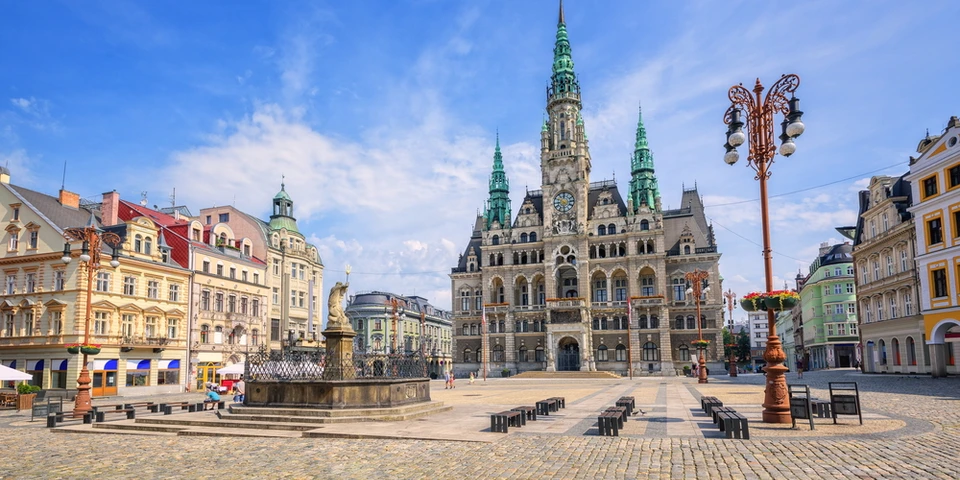
Monastery Hejnice
It is an important pilgrimage town whose history dates back to the 13th century. An important building is the listed Church of the Assumption of the Virgin Mary. The origin of the present church was a Gothic house of the Lord from 1472. Today, Hejnice continues to fulfill its historical role as a traditional place of pilgrimage. The classical music concerts held in the Church of the Assumption of the Virgin Mary are truly unforgettable.
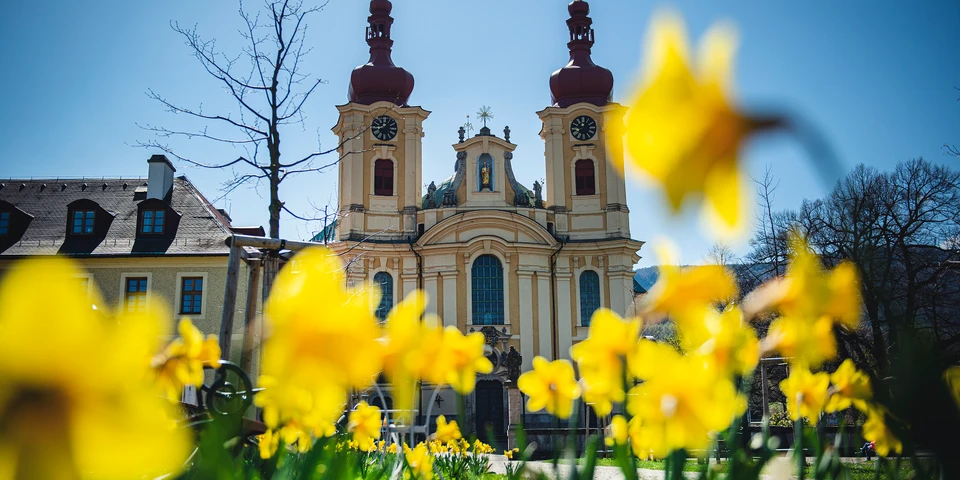
Nové Město pod Smrkem
The town was founded by Melchior of Redern in 1584 for his miners, who extracted tin ore in the nearby Měděnec mountain. As a result of this mining history, many tunnels and shafts now serve primarily as hibernation sites for bats. The oldest building in the town is the Church of St. Catherine, dating from 1607. Also noteworthy is the marble monument to the local parish priest and traveler G. Mendel. Near the railway, there is another church dating from 1911, which is under conservation protection, including its statues. The local museum of history, housed in the town library, features an interesting collection related to the history and nature of the Frýdlant region. Just a few kilometres from Nové Město is the border crossing to Poland. An interesting monument isthe Neo-Renaissance Klinger Villa, shown in the photo, which is used for private purposes.
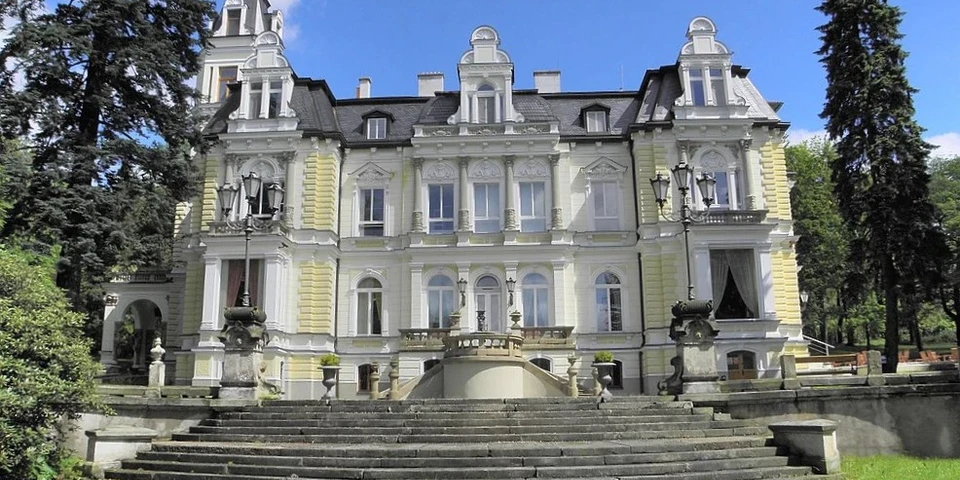
Oldřichov Rock Castle
In the 14th century, a “rock castle” (a fastness) was built on the imposing rock formation here to guard an important passage through the mountains. It likely disappeared in the 16th century. The area was once notorious for bandit activity, and many locations remain steeped in fascinating legends. According to one such legend, the rock castle was a robber stronghold, though more credible sources suggest it was a fortress protecting an ancient trade route connecting the Liberec and Frýdlant regions. Local folklore also claims it was connected to Frýdlant Castle by an underground tunnel. Other stories tell of a beautiful maiden held captive by bandits here. She attempted to escape, but the bandits gave chase and, on reaching the cliff edge, she tried to leap to a neighbouring rock. She failed, and the deep ravine into which she fell has since been known as Virgin’s Leap. From the rock castle, there is a beautiful view of the surrounding landscape. The sprawling massif of Oldřichov Rock Castle can be found amidst deep forests to the west of Oldřichovské Saddle and offers a beautiful view of the surrounding landscape, including the Frýdlant region and distant Upper Lusatia. Špičák, to the south-west, is also an interesting sight.
Smrk mountain
Smrk is the highest point of the Jizera Mountains, standing at an altitude of 1,124 meters above sea level, and features a beautiful lookout tower. Originally, there was a wooden lookout tower, 20 meters high, on this spot, which crowned the peak since August 21, 1892. An interesting detail is that the four-storey structure had to be constructed experimentally in the valley and then transported up to the top bit by bit. The lookout tower was in operation for an incredible 50 years, which is unique for such a structure. Soon after the end of the war (in 1946), the structure burned down, and it was not until September 20, 2003, that the new iron observation tower was inaugurated.
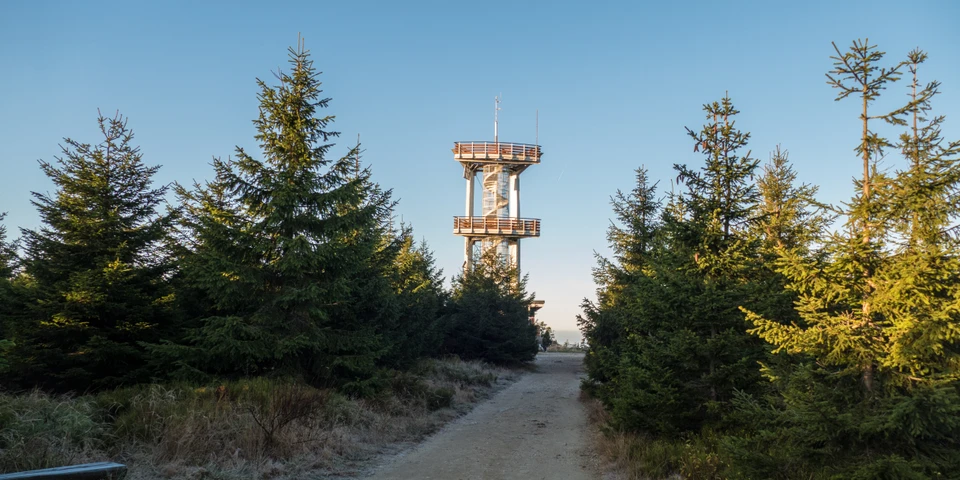
Spider Glass Heřmanice
Nestled in the picturesque village of Heřmanice near Frýdlant in the Liberec Region, Spider Glass Heřmanice is a glassmaking studio close to the borders with Poland and Germany in the north of Bohemia. Visitors can explore the entire glassmaking process, featuring a large fusing kiln, a glass grinding workshop, and a showroom housed in the restored attic space. This space has been transformed into an extensive gallery showcasing the studio’s glass and jewellery creations. Founded in 1990, it originally focused on designing and crafting glass interiors for clients both in the Czech Republic and abroad. More recently, it has specialised in original, handcrafted glass – everything from delicate jewellery (such as bracelets, pendants, and earrings) to functional items (including bowls, vases, ashtrays, candle holders, and plates). It even creates large-scale works – interior sculptures, glass walls, and one-of-a-kind commissions. At the heart of its craftsmanship is the technique of fusing and slumping glass. The studio uses its own ceramic moulds, designed in-house to ensure originality. All creations are crafted by the studio’s designer, with occasional collaborations involving external artists to bring fresh creative energy to every piece. Spider Glass Heřmanice exports its products across Europe and beyond, with notable commissions including a glass baptismal font for Rotterdam Cathedral, lighting installations for a hotel in Singapore, glass jewellery for clients in France and Dubai, monumental chandeliers in Dallas, and a glass bar for a hotel in Bogatynia, Poland. The studio has exhibited its work in galleries across Germany (Ronneburg, Görlitz), Poland (Bogatynia, Luban, Zgorzelec), the Netherlands (Roden, Coevorden), France (Marseille), and Dubai.
Guided tours of the workshop, gallery, showroom, and shop are available daily (Monday–Sunday) by prior phone or email appointment.
Šolcův Pond – Oldřichovské Saddle
One of the inviting spots for a swim near the town of Raspenava is Šolcův Pond, tucked away in the forest below the Srázy bluffs. This scenic body of water is also a favourite among anglers. The surrounding landscape is perfect for hiking, cycling, and cross-country skiing, with marked trails winding through the picturesque Jizera Mountains. These routes lead to stunning viewpoints overlooking the Frýdlant region, the Lusatian Mountains, and the Krkonoše range. For rock-climbers, the Zvon rock formation (550 m above sea level) is a popular challenge. A visit to this tranquil retreat can also be combined with a spa treatment in the nearby Libverda Spa Resort.
Triangl Viewpoint – Poustevníkův kámen – Ferdinandov
Enjoy stunning views over Hejnice, with its landmark church (a protected cultural monument), and take in the Jizera Mountains. From here, you can see Smrk, the range’s highest peak, along with Paličník, Smědavská hora, Frýdlantské cimbuří, and Ořešník. A popular destination for generations, in the mid-20th century this spot boasted a restaurant and even a forest theatre, built in 1913–1914. Today, the viewpoint features a tree-shaped interactive rotating panel that provides insights into the surroundings, the church, and the local wildlife.
Getting there: from Hejnice, start at the Church of the Visitation and follow the road towards Ferdinandov. After about 400 metres, turn right onto the dirt path between the new houses, and head towards Na Chatkách hill.
The Giant Barrel
The Giant Barrel is a restaurant located above the town of Lázně Libverda, where you can enjoy a beautiful view of the Jizera Mountains. The building was constructed in 1931 and primarily served spa guests. The design of this building was based on the original Giant Barrel on Mount Javorník, which was destroyed by fire on September 20, 1974. The Giant Barrel is situated along marked hiking and cycling trails. In addition to refreshments, you can also purchase tourist stamps and souvenirs here.
There are only two buildings of this type in the entire country.

Žitava (Zittau)
It is the gateway to the Zittauer Gebirge, a paradise for climbers, hikers, and nature lovers. It lies at the tri-border of Germany, the Czech Republic, and Poland, at the point where the Mandava River flows into the Lusatian Neisse. Approximately 25 thousand inhabitants live here. The Baroque Noacksches Haus, Johanniskirche, and the Neo-Renaissance town hall are located here. An interesting feature is the municipal coat of arms of Zittau, which consists of a quartered heart-shaped shield with a two-tailed silver Czech lion on a red background in the first and fourth fields, and a black Silesian eagle in the second and third fields.
We recommend combining your trip with a visit to the exceptional Oybin Castle and Monastery (pictured). Details can be found here.
